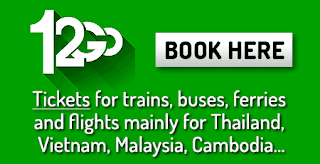Back in early June, a small pilot whale gained global attention after
it ingested plastic bags and packaging, and then died in southern
Thailand. It wasn’t a good look for the nation’s tourism industry.
A month later, Thailand’s Tourism Minister Weerasak Kowsurat holds up
a picture frame containing pieces of an instant-noodle packet recovered
from the stomach of the whale. For him, it’s emblematic of the
environmental and other stresses of a record tourism boom that could see
40 million foreign arrivals -- equivalent to over half the nation’s
population -- in 2019.
"Tourism can create, and at the same time, tourism can disrupt," said
Weerasak, 52, in an interview in his office in the Thai capital.
"Congestion is no good for anyone, including the hosts and the guests."
A surge in Chinese holidaymakers has stoked the growth in the tourism
sector, which now accounts for roughly 20 percent of Southeast Asia’s
second-largest economy.
Managing the inflow is proving challenging, underlined by a tragedy
last week that put the spotlight on safety standards after more than 40
Chinese tourists died when a boat sank off the coast of Phuket.
.
.
The disaster hasn’t had a significant impact on Chinese enthusiasm
for holidays in Thailand but the government has to be proactive to
prevent a wider fallout, said Thongyoo Suphavittayakorn, a spokesperson
for the Association of Thai Travel Agents.
Many of the overseas travelers head to Bangkok, beach hot-spots like
Phuket or the popular northern city of Chiang Mai, straining local
resources.
Asked if Thailand is now coming close to its tourism capacity, Weerasak said: "Oh yeah."
The minister is looking to promote visits to less-traveled spots
inside the country to tackle congestion in popular destinations as well
as addressing national income disparities. Yet that throws up a new
challenge: How to preserve the character of local communities and
heritage sites such as the ancient ruins of Ayutthaya that might have to
absorb a wave of foreign visitors.
Weerasak said he’s seeking to "encourage domestic and international
travelers to be very responsible, not only to the culture but also to
the environment."
Consider the case of Maya Bay on Phi Phi Island, which was made famous by the year 2000 movie The Beach starring
Leonardo DiCaprio. The bay has been closed down by authorities for four
months to give the island time to recover from environmental
degradation, such as coral damage from boat anchors and trash on
beaches, caused by constant tourist traffic.
"The increased influx of tourism is already having very visible
impacts on the Thai seas and coasts," Eike Schoenig, director and chief
resident scientist at marine environmentalist group COREsea, said in an
email. "Few countries have good track records managing mass tourism."
The Thai tourism minister is planning to install a reservation-only
system to control the number of visitors to the bay. Boats will be
forced to dock at the back of the bay, so that there will only be a
single entry point for tourists.
.
.
Thailand’s military government is also considering imposing a travel
insurance system to prevent tourists arriving without any protection and
ending up as a burden on the state if they get into trouble, he said.
Despite the difficulties, tourism is going to remain a critical
engine for Thailand, where economic growth is accelerating but lags
behind some neighboring countries. Government data shows revenue from
foreign tourists is projected at well over $60 billion next year, and
that spending remains focused mainly on major cities.
The country is pushing ahead with investment to expand airports as
passenger traffic climbs. State-run Airports of Thailand plans to pour
billions of dollars into boosting capacity in Bangkok as well as the
tourist-heavy spots of Phuket and Chiang Mai.
Countries such as France and Italy that get heavy tourist traffic manage to disperse visitors, said Weerasak.
"That is the pattern we want to see," he said. "The numbers keep increasing. It all depends on how you manage them."
Source - TheJakataPost


































